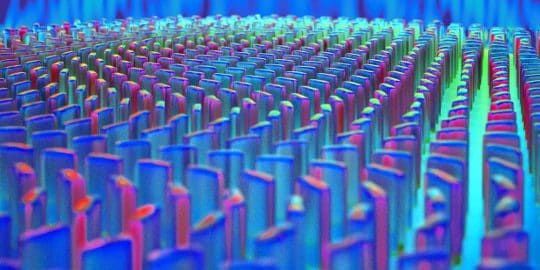We’re off to a quick start in the New Year with news of a remarkable development in lenses for VR and AR headsets. A new ultra-compact lens called a Metalens could signal a breakthrough in the design of our immersive technology devices.
Metalenses are flat surfaces that use nanostructures to focus light. And the lenses could have a profound impact on the use of virtual and augmented reality in our lives.
From Google Glass up to HTC Vive and Oculus Rift, the lenses in our HMD’s are anything but lightweight. Thick and bulky, they’re difficult to wear for extended periods. Even the new mixed reality goggles from Magic Leap (which – clearing our throats here – we still haven’t actually seen) look more like a steampunk version of eyewear from the Mad Max trilogy.
We’re not just talking about slimmed down optical lenses here. Metalenses could be as thin as a human hair. Your lenses for VR and AR headsets would literally begin to disappear.
New lenses for VR and AR headsets
From Science Alert,
A brand new type of lens called a metalens has just passed a major hurdle. A metalens is a flat surface that use nanostructures to focus light, and it could change optics forever by replacing the traditional bulky, curved lenses we know.
Up until now these ultra-compact lenses have had enormous potential, but they’ve struggled to focus a broad spectrum of light. Well, that just changed.
For the first time researchers have managed to develop a single metalens capable of focusing all the colours of the rainbow – the entire visible spectrum of light, making white light – into one point at a high resolution, something that has required multiple lenses in the past.
The potential for metalensing is vast. From better lenses in your smartphone cameras to a whole new breed of wafer-thin virtual reality and augmented reality headsets, according to the team from the Harvard John A. Paulson School of Engineering and Applied Sciences (SEAS) in Massachusetts.
Creating a metalens have been extremely challenging due to the speed that light moves through different materials. Violet is the slowest while red light moves the fastest. Traditional lenses compensate through curved surfaces but you can still run into problems of chromatic aberration, as any professional photographer knows.

Up to now, metalenses have been limited to a single wavelength of the color spectrum. But by using arrays of titanium dioxide nano-sized fins, researchers can now focus the broad spectrum of light on a single spot.
Challenges remain
You won’t see virtual reality HMDs with metalenses anytime soon. There are still major barriers to overcome.
According to NBCNews, the human eye reacts to wavelengths from around 380 nanometers (a shocking violet) to 700 nanometers (a deep red). Metalenses can only handle from 470-680 nanometers.
And for now, the resolution isn’t nearly as sharp as traditional glass lenses. The old-school solutions have worked well with a long history extending back to Mesopotamia and Ancient Egypt. Our own optical lenses arise from monks in the Middle Ages and their use of “reading stones” (a wonderfully archaic and evocative term).
But we’re in a new era. As one of the researchers, Alexander Zhu noted,
This brings us one step closer to the goal of incorporating them into common optical devices such as cameras.
. . . the next stage is to scale up the metalens to a 1 cm (0.39 inch) size, at which point the possibilities for VR, AR, standard cameras, microscopes and all kinds of optical technology really start to open up.
And in the future?
Here’s where it gets fascinating. With lenses for VR and AR headsets thin as a human hair, the issues of bulk and weight disappear (assuming we can resolve power supply issues).
 And metalenses would be easy to manufacture – in fact, they could be produced in the same facilities that make our computer chips. There would be huge economies of scale.
And metalenses would be easy to manufacture – in fact, they could be produced in the same facilities that make our computer chips. There would be huge economies of scale.
Our Vive and Rift HMDs are remarkable devices, but they are like our early laptops. The Osborne 1 was released in June 1981, weighed almost 25 pounds, cost $1795 and had only a 5″ screen. Remarkable for its time, no one would dare use one today.
So as we swing between excitement and disappointment over the latest releases of VR and AR headsets, developments behind the scenes are shaping our immersive and virtual future. Your head-mounted display (HMD) will be a term a future generation finds incomprehensible.
The virtual will be in your eyewear and contact lenses.
For more information on the metalens breakthrough, you can see the BBC Report or dive into the full academic paper.
Emory Craig is a writer, speaker, and consultant specializing in virtual reality (VR) and artificial intelligence (AI) with a rich background in art, new media, and higher education. A sought-after speaker at international conferences, he shares his unique insights on innovation and collaborates with universities, nonprofits, businesses, and international organizations to develop transformative initiatives in XR, AI, and digital ethics. Passionate about harnessing the potential of cutting-edge technologies, he explores the ethical ramifications of blending the real with the virtual, sparking meaningful conversations about the future of human experience in an increasingly interconnected world.

